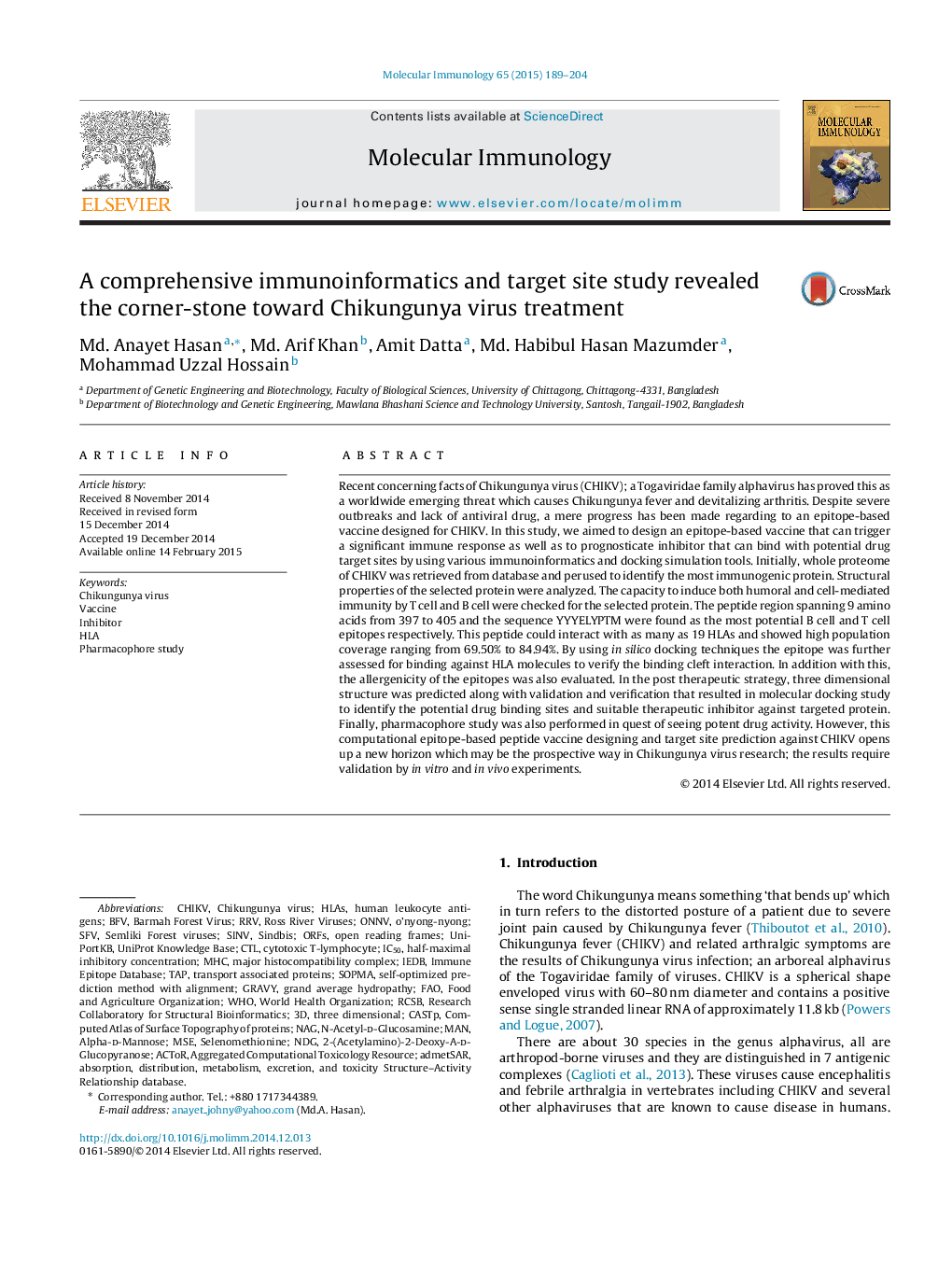| کد مقاله | کد نشریه | سال انتشار | مقاله انگلیسی | نسخه تمام متن |
|---|---|---|---|---|
| 2830640 | 1163747 | 2015 | 16 صفحه PDF | دانلود رایگان |

• Epitope-based vaccine design facilitates laboratory research and save valuable time and money.
• Immunoinformatics tools were used to predict B and T-cell epitopes within the E2 protein.
• Highest population coverage was recorded 84.94% in Papua New Guinea.
• Docking study revealed that E2 binds with lowest possible binding energy.
• Pharmacophore study suggested MAN as the most effective inhibitor of the CHIKV E2.
Recent concerning facts of Chikungunya virus (CHIKV); a Togaviridae family alphavirus has proved this as a worldwide emerging threat which causes Chikungunya fever and devitalizing arthritis. Despite severe outbreaks and lack of antiviral drug, a mere progress has been made regarding to an epitope-based vaccine designed for CHIKV. In this study, we aimed to design an epitope-based vaccine that can trigger a significant immune response as well as to prognosticate inhibitor that can bind with potential drug target sites by using various immunoinformatics and docking simulation tools. Initially, whole proteome of CHIKV was retrieved from database and perused to identify the most immunogenic protein. Structural properties of the selected protein were analyzed. The capacity to induce both humoral and cell-mediated immunity by T cell and B cell were checked for the selected protein. The peptide region spanning 9 amino acids from 397 to 405 and the sequence YYYELYPTM were found as the most potential B cell and T cell epitopes respectively. This peptide could interact with as many as 19 HLAs and showed high population coverage ranging from 69.50% to 84.94%. By using in silico docking techniques the epitope was further assessed for binding against HLA molecules to verify the binding cleft interaction. In addition with this, the allergenicity of the epitopes was also evaluated. In the post therapeutic strategy, three dimensional structure was predicted along with validation and verification that resulted in molecular docking study to identify the potential drug binding sites and suitable therapeutic inhibitor against targeted protein. Finally, pharmacophore study was also performed in quest of seeing potent drug activity. However, this computational epitope-based peptide vaccine designing and target site prediction against CHIKV opens up a new horizon which may be the prospective way in Chikungunya virus research; the results require validation by in vitro and in vivo experiments.
Journal: Molecular Immunology - Volume 65, Issue 1, May 2015, Pages 189–204